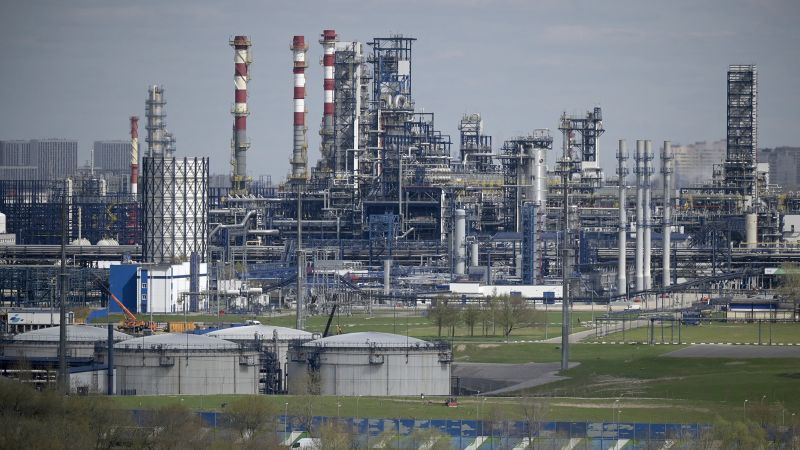
London
CNN
—
Europe’s ban on Russia’s diesel arrived painlessly on Sunday.
Although the EU cut off its biggest supplier, diesel futures prices in the bloc fell 1.6% on Monday, amounting to a 20% loss over the past two weeks as demand in the region has waned, and efforts by countries to stockpile ahead of the ban have started to pay off.
The price drop will be met with relief by millions of the continent’s truckers, drivers and businesses that rely on diesel. About 96% of trucks, 91% of vans and 42% of passenger cars in the European Union run on the fuel, according to the European Automobile Manufacturers’ Association.
“The expectation was that, when the ban came in, diesel supply into Europe would tighten but, actually, that’s currently not materializing,” Mark Williams, a research director at consultancy Wood Mackenzie, told CNN.
The diesel ban comes two months after the bloc placed an embargo on seaborne crude oil imports from Russia, as part of a package of sanctions against Moscow for its invasion of Ukraine. Russia accounted for 29% of the region’s total diesel imports last year, data from Rystad Energy shows.
Countries have prepared for the latest ban by ramping up imports of Moscow’s diesel in recent months. Europe’s imports were up nearly 19% in the fourth quarter of 2022 compared with the same period the previous year, according to energy data provider Vortexa.
“Those stocks should act as a buffer against the immediate loss of Russian diesel imports,” Williams said.
Demand across the bloc is also weak.
Data from OilX, an oil analytics firm that, shows that diesel demand in Europe was down between the start of November and the end of January compared with the same period a year before.
Analysts attribute the slump partly to warmer-than-usual weather in the region, where diesel is also used as a heating fuel, and high prices. Despite recent drops, wholesale prices are still 10% above their level the same time last year.
At the pump, the average cost of a liter of diesel in the EU hit €1.80 ($1.93) on January 30, up from €1.60 ($1.72) the same time last year, data from the European Commission shows.
Neil Crosby, a senior analyst at OilX, told CNN that “persistently weak demand data” in Europe had helped it “substantially boost its gasoil stocks over the last few months.”
Still, it may take a few months for the full impact of the ban to be felt as Europe starts to import more diesel from suppliers further afield, incurring higher shipping costs.
The bloc is already importing significantly higher volumes of diesel from the United States, the Middle East and parts of Asia, according to Williams at Wood Mackenzie.
Even so, those imports will not be enough to “offset the loss of Russian barrels into Europe,” once Europe whittles down its stockpile, he said, adding that prices relative to other importing regions could start to rise from the third quarter this year.
The impact of the ban on Russia may also be underwhelming.
Moscow has managed to reroute more of its diesel to other markets since July of last year. Exports to Turkey and North Africa have soared 154% between November and January compared with the same period a year before, according to Rystad Energy.
Jorge León, a senior vice president at the firm, sees this trend continuing, he told CNN, also predicting that Russian exports to South America are likely to stay at “marginal” levels.
However, he added that the United States could redirect some of its current diesel exports to South America to Europe, with Russian diesel then “find[ing] a home” in South America.
OilX’s Crosby noted that there are “many more” potential buyers of Moscow’s diesel compared with its crude exports.
“Most Russian diesel barrels will manage to make it to global markets,” he said. “The notion that Russian diesel will have a very hard time finding new homes is beginning to lose credibility.”
— Julia Horowitz contributed reporting.
Correction: An earlier version of this article incorrectly reported the measurement of diesel that has fallen in Europe. Diesel demand has fallen.

